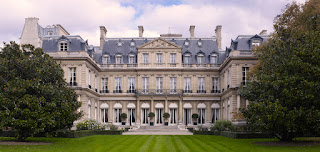Forward was the first Italian to play in the English Premier League
 |
Andrea Silenzi was a leading striker for
Torino before joining Nottingham Forest |
The footballer Andrea Silenzi, who made history in 1995 when he became the first Italian to be signed by a Premier League club, was born on this day in 1966 in Rome.
A 6ft 3ins centre forward, Silenzi had enjoyed Serie A success with
Torino in particular, his form persuading
Nottingham Forest to offer £1.8 million - the equivalent of about £3.5 million (€4 million) today - to bring him to England.
When Forest manager Frank Clark proudly announced his new man before the 1995-96 season, it was seen as an important moment for the fledgling Premier League, then only three seasons old.
The Italian League at the time was the most glamorous in Europe, wealthy enough to hire stars from all around the world, including many British players; it was rare for Italian players to move abroad. Yet Silenzi, a teammate of
Diego Maradona during a two-year stay with Napoli who had won a call-up to the Italian national team after his 17 goals for Torino in the 1993-94 season, had agreed to come to England.
Forest gave Silenzi a contract worth £360,000 a year, a considerable sum at that time. Was the tide now turning, with the money flooding in from lucrative television contracts putting the Premier League clubs on an equal footing?
 |
Silenzi made a limited impact at Nottingham Forest but
was still a trailblazer for Italians in the Premier League |
In the event, Silenzi was unable to make the impact that Forest had hoped from him, making only 12 Premier League appearances in his two seasons in England. His only goals - just two - came against smaller clubs in the cup competitions and he went back to Italy in October 1996, joining
Venezia on loan before Forest cancelled his contract.
Yet although Silenzi was branded a flop, his arrival did mark the beginning of a trend and within a couple of years fans of the Premier League were able to watch high-quality Italian players at a number of clubs.
Chelsea signed three Italians in
Gianluca Vialli, Gianfranco Zola and
Roberto Di Matteo, Middlesbrough recruited
Gianluca Festa and
Fabrizio Ravanelli and Sheffield Wednesday brought in
Benito Carbone and
Paolo Di Canio.
Derby County joined the trend by signing
Francesco Baiano and
Stefano Eranio, Crystal Palace landed
Attilio Lombardo and Tottenham attracted
Nicola Berti.
Silenzi had begun his career in the youth team of Pescatori Ostia, a junior club based at the beach resort of
Lido di Ostia, 30km (19 miles) outside Rome, before beginning his professional career with Lodigiani, now extinct but then the capital’s third-biggest club after
AS Roma and
Lazio.
 |
Paolo Di Canio joined Sheffield Wednesday in the wave of
Italians that followed Silenzi to the Premier League |
His goals for Lodigiani earned him a move to Tuscan club Arezzo, then in Serie B, and although he was not successful there his next move, back to Serie C to play for
Reggiana, paid dividends. His nine goals in his first season for the Reggio Emilia team helped them win promotion to Serie B, and he was the top scorer for the whole of Serie B in 1989-90 with 23 goals.
That led to interest from
Napoli, who were then the best team in Italy, winners of both Serie A and the Coppa Italia in 1990. Silenzi made a immediate impact, scoring twice against Juventus in the Supercoppa Italia on his debut.
In the event, competing with such stars as Maradona, Zola and the Brazil forward Careca, Silenzi’s opportunities were limited in Naples, yet the move to Torino confirmed his talent, which is why Forest, who had finished third in the Premier League in 1994-95, saw him as a player worth signing.
Silenzi was treated harshly by the English press, with one national newspaper recently listing him as one of the “10 worst foreign signings” in Premier League history. Yet in a recent interview he insisted he enjoyed the experience of playing in England.
After resuming his career in Italy, Silenzi retired from playing in 2000. Since then, he has worked for a number of clubs in the role of sporting director and appeared as a pundit on television but is no longer involved in football, devoting his energies to running an expanding construction business in his home city.
One of his two children - his son
Christian - followed him into football, however. Aged 21, he plays for Albissola, a third-tier team from Liguria, as a winger.
 |
The beach at Ostia Lido attracts many visitors from
nearby Rome during the summer months |
Travel tip:
The seaside resort of
Ostia Lido, where Silenzi was a youth player, lies 30km (19 miles) to the southwest of Rome, situated just across the mouth of the Tiber river from Fiumicino, home of Rome’s largest international airport. It is the only district of the Rome municipal area on the sea. It adjoins the archeological site of the ancient Roman city of Ostia Antica, once the harbour city of Rome, which has many well preserved remains. Many Romans spend their summer holidays in the modern town, swelling the population of 85,000.
Hotels in Ostia Lido by Booking.com
 |
The Basilica di San Prospero, built between the 16th and
18th centuries, is a notable building in Reggio Emilia |
Travel tip:
The city of
Reggio Emilia, where Silenzi played for the local Reggiana team, may lack the cultural wealth of neighbouring Parma and is consequently less visited, yet it has an attractive historic centre with a number of notable buildings, including the Basilica della Ghiara and the 10th century Basilica di San Prospero, which overlooks the elegant Piazza of the same name. The province is also believed to have given Italy its
tricolore national flag, with evidence that a short-lived 18th century republic, the Repubblica Cispadana, had a flag of red, white and green. It can also claim to be the home of Italy's world famous hard cheese, Parmigiano-Reggiano, which is thought to have originated in the commune of Bibbiano, about 15km (9 miles) to the southeast of the city.

























